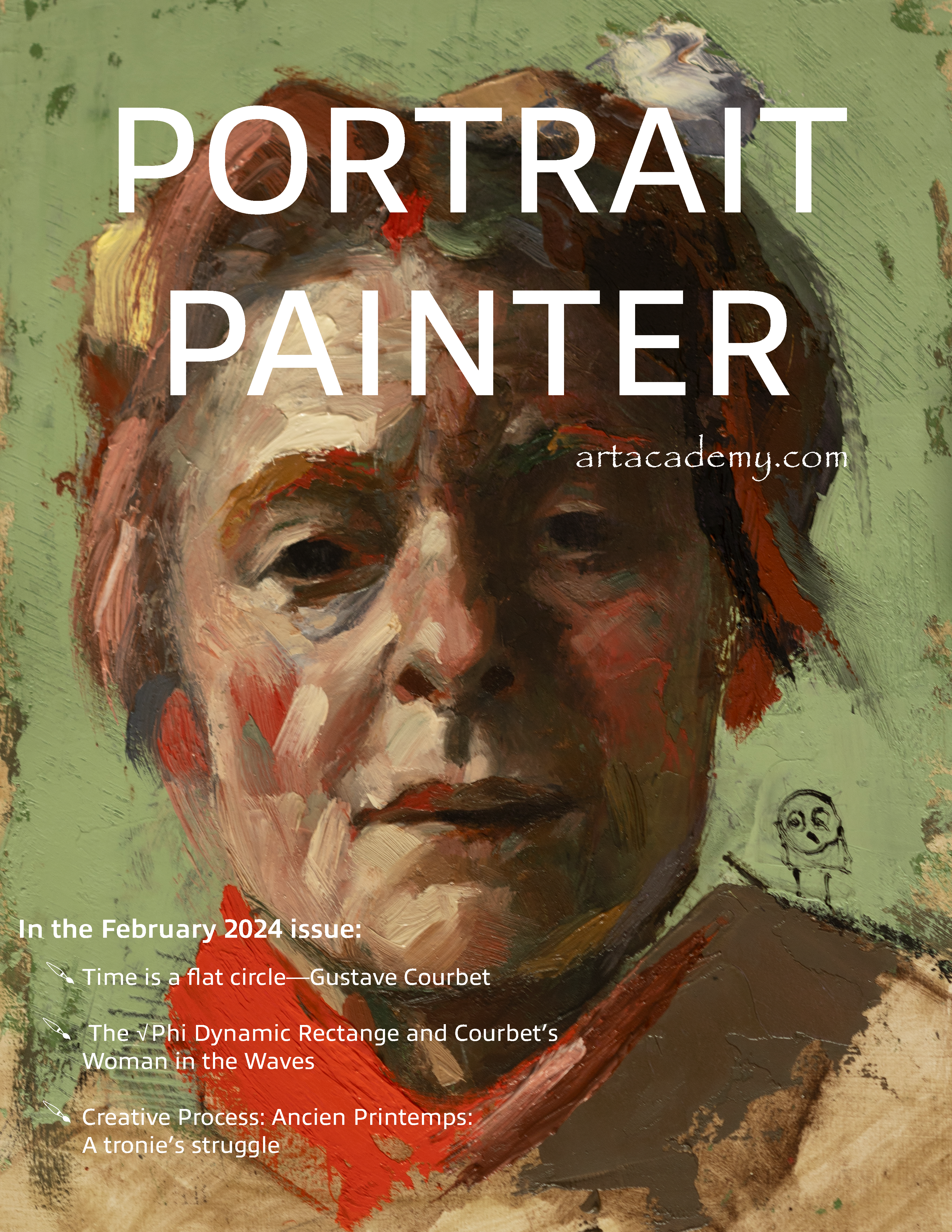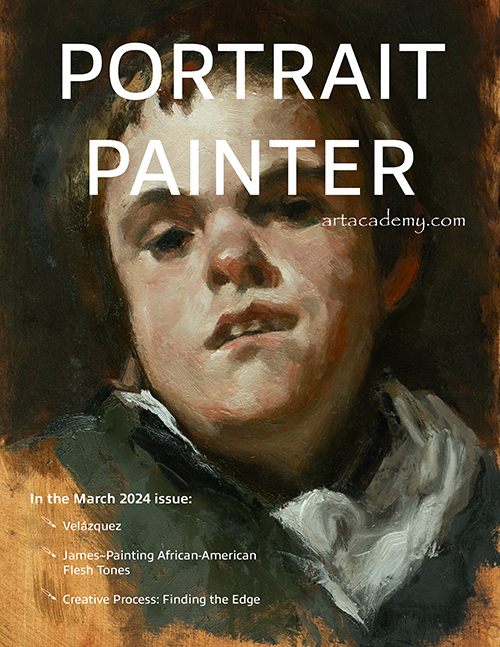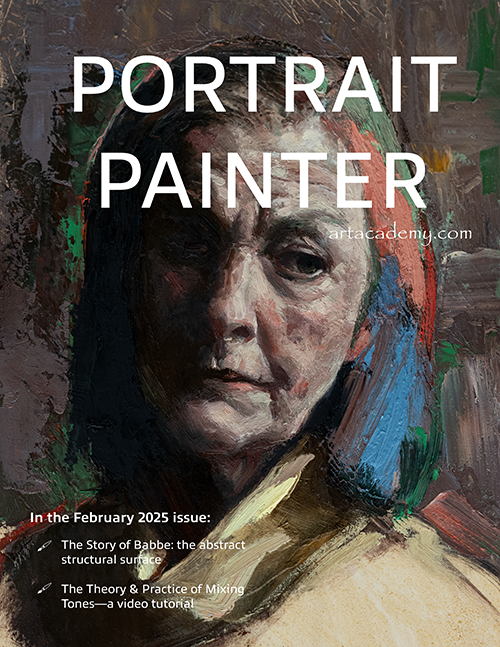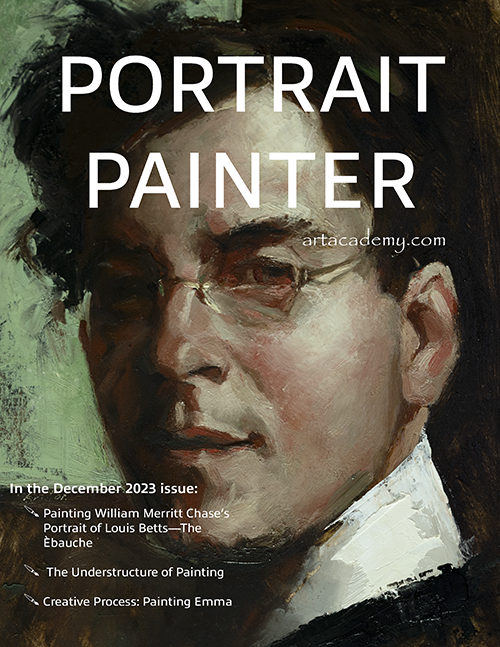
The December 2023 issues features Louis Betts: The Ebauche ... over an hour of video lessons on how to begin a painting;
The Understructure of Painting ... an introduction to dynamic composition and how to make your portrait paintings even more engaging.
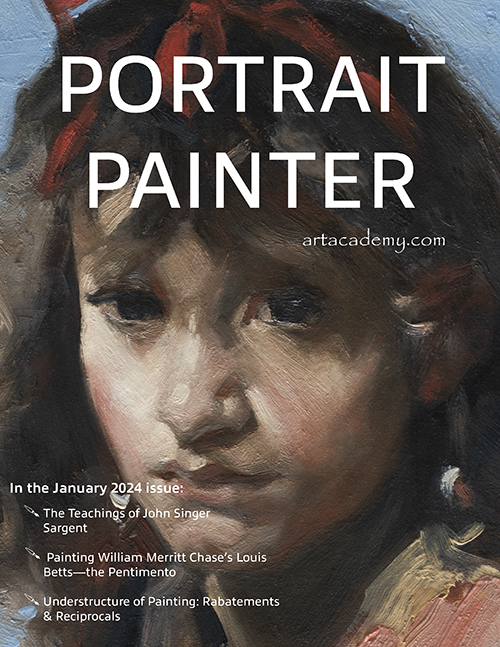
The January 2024 issue features The Teaching Process of John Singer Sargent ;
The Understructure of Painting ... using the critical composition tools: the Rabement and Reciprocals
Painting Carmella ... copying Sargent's 'Carmela Bertegna' step-by-step
and continuing with the Pentimento: First Pass of Painting Louis Betts
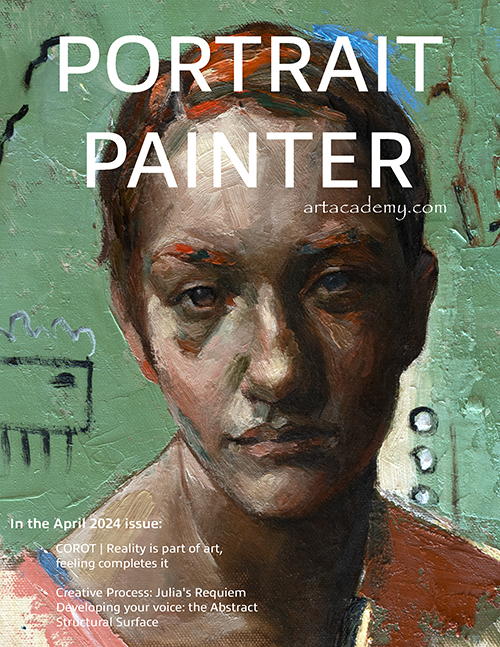
The April 2024 issue of PORTRAIT PAINTER features the realist painter Jean-Baptiste-Camille Corot (1796 - 1875) whose plein air landscapes paved the way for Impressionism. And whose figurative works informed 20th Century figure painting.
Also in the April issue is my process of painting Julia's Requiem where I discuss the development of 'voice' in your painting vis-a-vis the abstract structural surface.
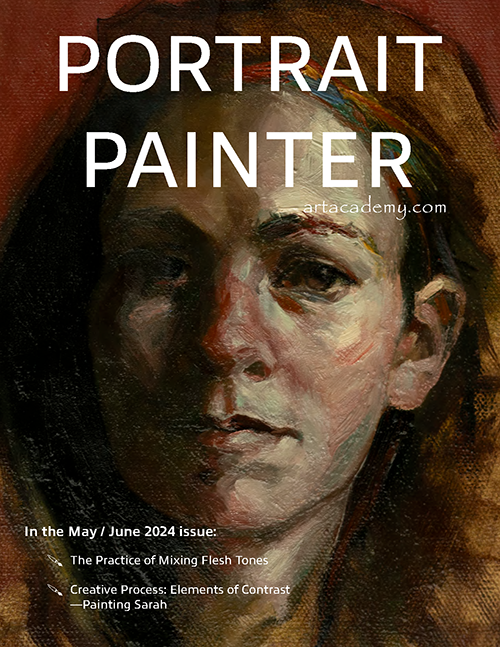
The May/June 2024 issue of PORTRAIT PAINTER is video heavier than usual. The focus is mixing flesh tones, the theory and practice.
Flesh tones are a major stumbling block for the beginning portraitist. All too often the portrait 'chalks out'. Too much white. Not enough chroma. Even the palest sitter's skin tone is much darker than one would suppose. There are innumerable approaches to mixing flesh tones. Some good, some bad, a few excellent. Once you find a compatible process, master it and then adapt it to your needs and voice.
The beginning artist is well advised to spend as much time on mixing colors as they would painting. With practice that will soon change.
Creative Process discusses the Elements of Contrast and their utilization in my painting Sarah.
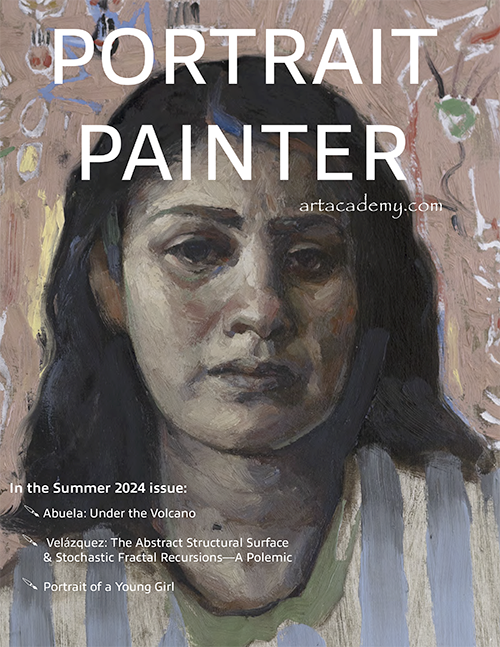
The Summer 2024 issue of PORTRAIT PAINTER features a polemic on what makes some painters soar above all of the others. Granted, great art will always defy analysis but there are elements that contribute to master painting. Here I present an idea, a polemic, which I cannot prove but feel its presence. This is the idea of Velazquez applying stochastic fractal recursions within his paint handling, his abstract structural surface.
All organic forms are fractal. Many, such as trees, blood vessels, our DNA, the patternings on animals, present a deterministic sequence of replicating shapes. Clouds, coast lines, waves lapping upon a shore line present stochastic fractals. It is a reasonable assumption that the human face, too, is comprised of fractal relationships.
My assertion in this polemic is that Velázquez realized this. Maybe not definably in his conscious mind, but most definitely in his unconscious. And that is the font where all great paintings manifest.
The beginning artist is well advised to spend as much time on mixing colors as they would painting. With practice that will soon change.
Creative Process features Abuela: Under the Volcano
My beginning intent in this tronie of an abuela, a granny at an early age, was a portrait of fracture. A fracture at the core of one's being. A fracture of family and the fracturing of homeland that propels much of the desperate migration in the world today. Whether or not I was successful in that intent ... well, I am the last to know. Painters are often cuckolded, hoisted by their own petard and palette.
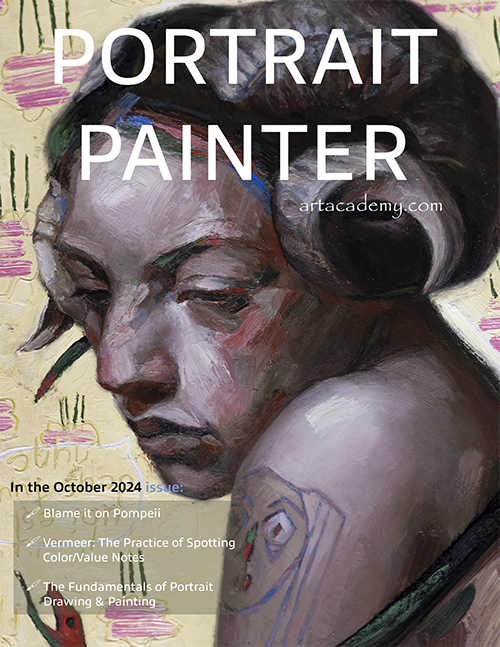
The October 2024 issue of PORTRAIT PAINTER features a duel, a scuffle to the death, between Jean-Léon Gérôme and your's truly.
Utilizing Gérôme's The Bacchante, 1853 as a foil I deliver a resounding smack of my snot streaked mitten to wipe the smirk off of the face of Classical Realism.
Perchance you might ask why am I prosecuting Gérôme? Gérôme was an affable fellow, I would have enjoyed a frothy beverage or several with him, but he was out-of-step even in his time, the late 19th Century. It is Gérôme's pedagogy and aesthetic, namely, the Bargue method, that today's Academies are predicated. We live in a time that cries out for giants of painting. Our age of alienation and loneliness is fecund ground for expression. And illustrative, academic painting modes will not cut it.
I might also have hoisted myself with my own petard.
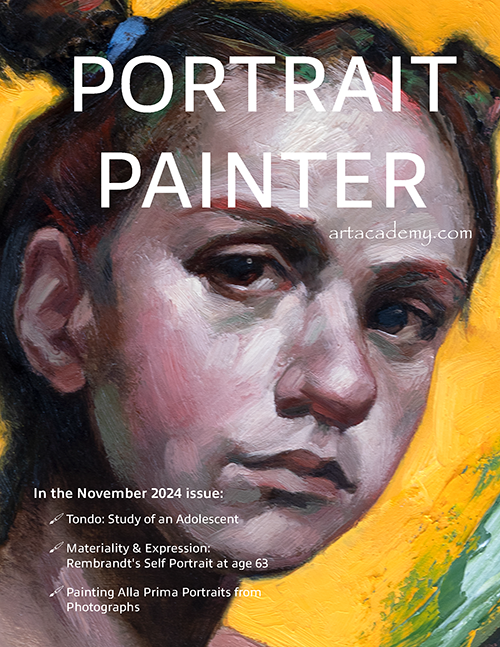
The November 2024 issue of PORTRAIT PAINTER is focused on the materiality of oil paint and its expressive diction.
Given the catastrophe of the October issue I have reined myself in. My opinions crushed as much as I can tolerate.
... moving on ... herein I present the painting process of Rembrandt's Self Portrait at the Age of 63 and Tondo: Study of an Adolescent.
The November issues includes a 55 minute HD video tutorial on how to begin Gérôme's Head of a Child.
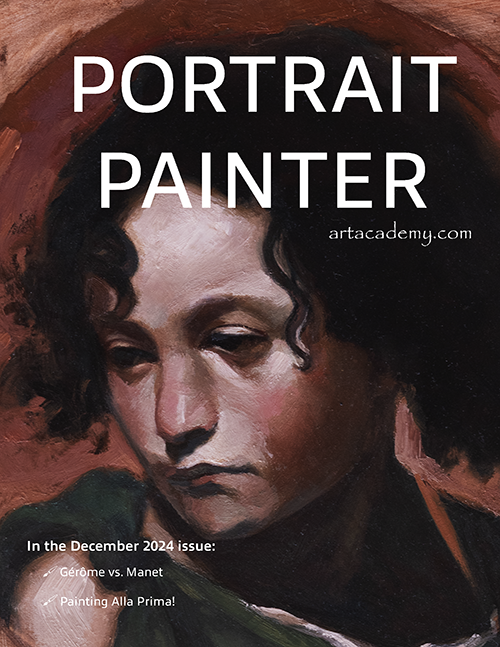
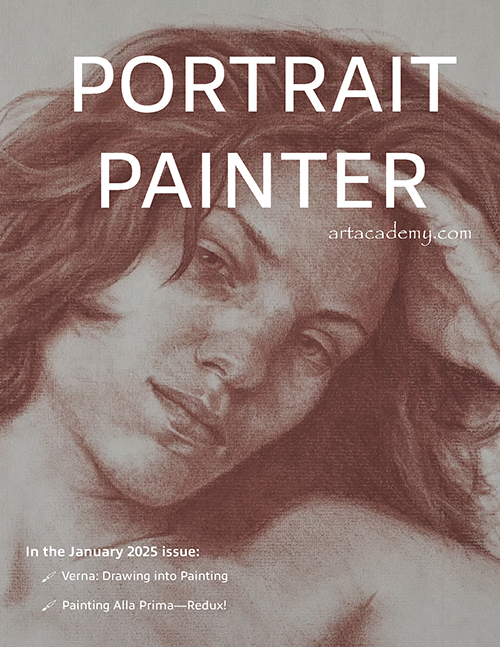
Another year awakens and we have promises to keep. For me the year begins with sharpening my striking skills. When a painting fails to thrive the culprit can often be attributed to not quite getting the BIG shape right. That is the locus of a painting and if that center cannot hold ... well, it all goes to ruin.
The January 2025 issue of PORTRAIT PAINTER kicks off with Verna, a drawing that I disinterred from the dusty tomb that is my filing cabinet and worked into a painting.
For me the setting of a year is both a time of sombre reflection and renewed ambition to paint. As one painting sets and is put to rest, sometimes mournfully, another rises.
The second most important element, technique-wise, is not discussed enough. Unity is, hands-down, the most important. And the second is the abstract structural surface of your painting. That is your syntax, your diction through which your story/narrative is told.
Imagine Huckleberry Finn espousing upon the dark mysteries of the Mississippi in Elizabethan English. It very likely would contribute ill for the work. Your paint handling is the same.
Also in the February 2025 issue is a 32-minute HD video on both the theory and practice of mixing realist flesh tones.


